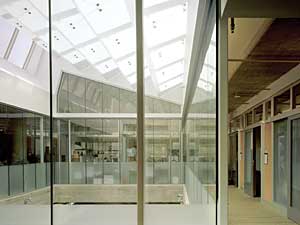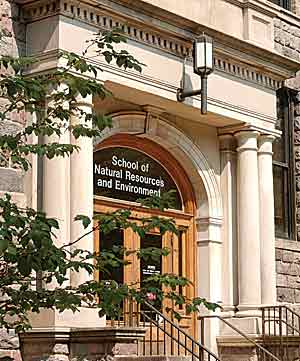The Green Market Reaches Critical Mass
The Carnegie Center's ongoing research project named e-Bids links productivity, health, and environmental cost-benefit case studies with key design guidelines for high-performance buildings. Its web-based tool (http://cbpd.arc.cmu.edu/ebids) illustrates the power of the arguments to date for daylighting, high performance electric lighting, mixed mode HVAC, commissioning, underfloor air, and cool roofs. Building Investment Decision Support (BIDSTM) (www.aia.org/cote_highlight) is a description of the BIDS (Building Investment Decision Support) tool and research project, funded by a consortium of industries and federal agencies dedicated to the performance of advanced building systems (ABSIC) (http://cbpd.arc.cmu.edu/bidstrial/). It is a rare and useful source of design guidelines and research findings. (see Figures 2 and 3)
Senior researcher Vivian Loftness, FAIA, Professor, School of Architecture Carnegie Mellon University, finds that building performance and productivity is best argued piece by piece. When faced with an audience of executives, she asks about the differences between a $10,000 car and a luxury model costing $30,000. Within moments she has sheets filled with answers. But when asked about superior buildings, people are hard put to come up with three features-and those are often gold plated fixtures and marble lobbies. Building quality, she maintains, can only be explained by breaking down the components.
Reducing energy and environmental costs
SmartMarket reports that by far the top-ranked business reason for involvement in green buildings is "lower operating costs." Commercial office buildings are often used as a prime example of potential savings. Annual energy costs of approximately $24 billion represents the single largest controllable expense. By reducing energy consumption by 30 percent through improved building operating standards-a goal readily achievable according to BOMA-7.2 billion could be saved each year. (See Figure 1)
|
||||||||||||||
The School of Nursing and Student Community Center at the University of Texas Health Science Center in Houston (anticipated to be a Gold LEED certified facility) by BNIM Architects, in collaboration with Lake Flato Architects completed in 2004, more than proved both BOMA's claim regarding energy savings and, at $212 per sq ft, that initial costs for building green are not prohibitive. Its energy consumption reduction achieved for LEED was 40 percent, which, at 2004 energy prices, will save the building approximately $38,000 annually. The building stores 826,000 gallons of grey water for toilet flushing and irrigation and uses an underfloor air-distribution system used in teaching and office spaces to save energy and increase occupant comfort. Materials and products specified included a 48 percent fly-ash cement mixture that prevented 1,808 tons of carbon dioxide from being released, cotton insulation, agrifiber board, and low Volatile Organic Compounds (VOC) paints, adhesives and sealants. The actual cost of the 194,000 gross sq ft building was $41,250,000.
|
||||||||||||||
Another Gold LEED project is the University of Michigan's Samuel T. Dana Building by William McDonough + Partners and the local architecture firm of Quinn Evans Architects in the School of Natural Resources and Environment. The $17.7 million renovation resulted in a 31 percent reduction in water use through installation of low-flow plumbing fixtures, composting toilets, and waterless urinals; 30 percent reduction in energy use through installation of high-efficiency lighting, and one of the first installations of ceiling-mounted radiant cooling system in the U.S. Additionally, it includes rubber flooring made from recycled rubber, ceiling panels made from biocomposites, bathroom tiles made from recycled glass, and toilet partitions made from recycled plastic bottles.











